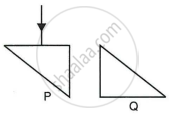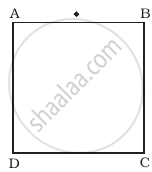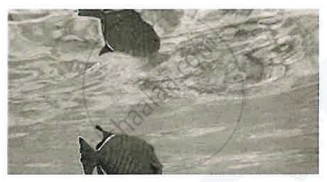Advertisements
Advertisements
प्रश्न
A ray of light incident at an angle of incidence ‘i’ passes through an equilateral glass prism such that the refracted ray inside the prism is parallel to its base and emerges from the prism at an angle of emergence ‘e’.
What can you say about the value of the angle of deviation in such a situation?
उत्तर
Angle of deviation becomes minimum in this situation.
APPEARS IN
संबंधित प्रश्न
State the conditions required for total internal reflection of light to take place
Name two factors which affect the critical angle for a given pair of media. State how do the factors affect it.
Two isosceles right-angle glass prisms P and Q are placed near each other as shown in Fig. Complete the path of the light ray entering the prism P till it emerges out of the prism Q.

Can light be ‘piped’ like sound in a doctor’s stethoscope?
Answer the following question.
Explain ‘mirage’ as an illustration of refraction.
The outer concentric shell in optic fiber is called ______.
Optical Fibres are based on the phenomenon of dispersion.
A rectangular block of glass ABCD has a refractive index 1.6. A pin is placed midway on the face AB (Figure). When observed from the face AD, the pin shall ______.

- appear to be near A.
- appear to be near D.
- appear to be at the centre of AD.
- not be seen at all.
A ray of light passes from vacuum into a medium of refractive index µ, the angle of incidence is found to be twice the angle of refraction. Then the angle of incidence is ______.
The diagram below shows a fish in the tank and its image seen in the surface of water.

Name the phenomenon responsible for the formation of this image.
